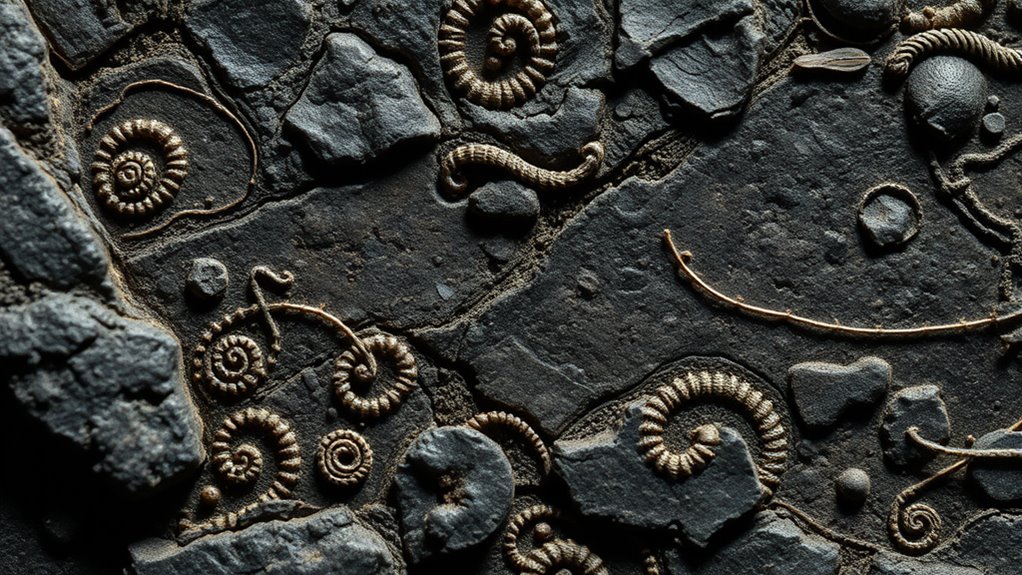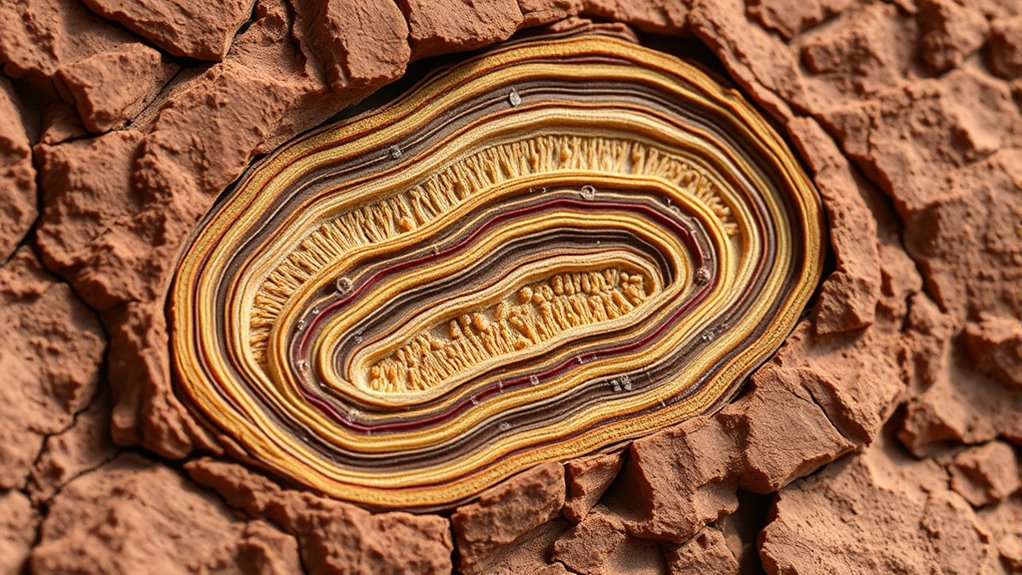Recent discoveries in ancient fossils show that complex life existed about 1.5 billion years earlier than scientists thought. Using advanced fossil dating techniques, researchers uncovered microbial mats in rocks that are much older than expected. This finding suggests multicellular organisms appeared much sooner in Earth’s history, challenging long-held ideas about evolution’s timeline. If you’re curious, uncover how these innovations reveal deeper insights into our planet’s earliest life forms.
Key Takeaways
- Fossil evidence suggests complex multicellular life existed approximately 1.5 billion years earlier than previously believed.
- Microbial mats in ancient rocks indicate early, layered communities of microorganisms predating earlier estimates.
- Advanced radiometric dating techniques have refined the age of these fossils, confirming their extraordinary antiquity.
- The findings significantly extend the timeline for the emergence of complex life on Earth.
- These discoveries challenge traditional views of evolution, revealing that complex organisms appeared much earlier in Earth’s history.

Have you ever wondered what life was like millions of years ago? The story of Earth’s earliest inhabitants is more complex and fascinating than you might imagine. Recent discoveries suggest that complex life existed approximately 1.5 billion years earlier than scientists previously believed. This revelation challenges long-held ideas about the timeline of evolution and pushes back the origins of multicellular organisms by a remarkable margin. To piece together this ancient history, researchers rely heavily on fossil dating techniques, which help determine the age of ancient remains with increasing accuracy. These methods include radiometric dating, which measures the decay of radioactive isotopes in rocks and fossils, providing a reliable timeline for when these organisms existed.
One of the key indicators of early life comes from microbial mats—layered communities of microorganisms that thrived on Earth’s surface billions of years ago. These mats, often found preserved in ancient rocks, serve as some of the earliest evidence of life’s complexity. They form intricate, layered structures that can be fossilized over time, giving scientists a window into the distant past. When examining these microbial mats, scientists use fossil dating techniques to establish their age, often discovering that they are hundreds of millions of years older than previously thought. This, in turn, implies that the capacity for more advanced, multicellular life must have also emerged much earlier than once believed. Fossil dating techniques have become increasingly sophisticated, allowing researchers to refine their estimates and deepen our understanding of early biological evolution. Additionally, ongoing advancements in geochronology continue to improve the precision of these dating methods, further illuminating Earth’s ancient biological timeline. Furthermore, integrating geochemical analysis with fossil data helps scientists uncover environmental conditions that supported early life forms, adding more context to these groundbreaking discoveries. The discovery of these ancient microbial communities implies that the roots of complex life are deeper and more ancient, fundamentally altering our understanding of Earth’s biological history.
Frequently Asked Questions
How Do These Fossils Impact Current Evolutionary Theories?
You see, these fossils challenge your understanding of the evolutionary timeline by showing that complex life existed much earlier than previously thought. Their preservation offers critical clues that push back the origin of complex organisms, forcing you to reconsider existing theories. These discoveries highlight the importance of fossil preservation and suggest that life’s evolution is more intricate and ancient, reshaping how we view the history of life on Earth.
What Methods Are Used to Date These Ancient Fossils?
Imagine you’re a detective solving an ancient mystery. To date fossils, you rely on methods like radiometric dating, which measures radioactive decay, and fossil calibration, aligning fossils with known geological ages. These techniques help you determine when the fossils formed, giving you a timeline of life’s evolution. By accurately dating fossils, you piece together Earth’s history and better understand the origins of complex life forms.
Could These Fossils Be Misinterpreted as Simpler Life Forms?
You might wonder if these fossils could be misinterpreted as simpler life forms due to morphological ambiguity. Fossil interpretation can be tricky, especially when ancient structures resemble modern microorganisms. Careful analysis helps distinguish between complex and simple life, but uncertainties remain. Advanced imaging and chemical tests aid in clarifying these ambiguities, ensuring you accurately understand whether these fossils truly represent early complex organisms or are just simpler forms mistaken for more advanced life.
How Do These Findings Affect the Search for Extraterrestrial Life?
Did you know that discovering ancient complex fossils over 1.5 billion years old transforms how you see life’s origins? These findings profoundly impact astrobiology implications, suggesting life arose earlier and under different conditions than previously thought. For your extraterrestrial search, this means you might need to look for signs of complex life in even older or more extreme environments, broadening your approach and increasing the chances of finding extraterrestrial life.
Are There Other Undiscovered Fossils That Could Alter This Timeline?
You might wonder if there’s a fossil discovery out there that could revise this timeline further. It’s possible, as new fossils are always being uncovered, and each find can shift our understanding of life’s history. These discoveries could lead to more timeline revision, revealing even earlier origins of complex life. Staying curious and continuing exploration keep the chance alive for future fossil discoveries that could redefine our understanding of evolution.
Conclusion
These ancient fossils remind you that life’s story is far longer and more intricate than you imagined. They push back the timeline, revealing that complex life existed 1.5 billion years earlier. Just as these fossils have quietly rewritten history, so too can your understanding of the past evolve. Sometimes, the deepest truths lie hidden beneath the surface, waiting for discovery—reminding you that the past’s secrets shape the future’s possibilities.









